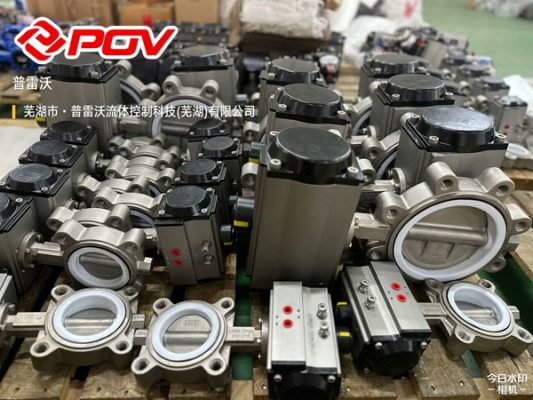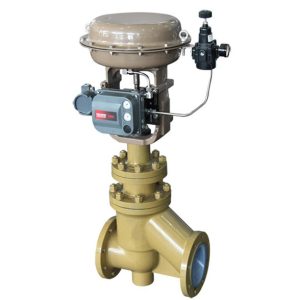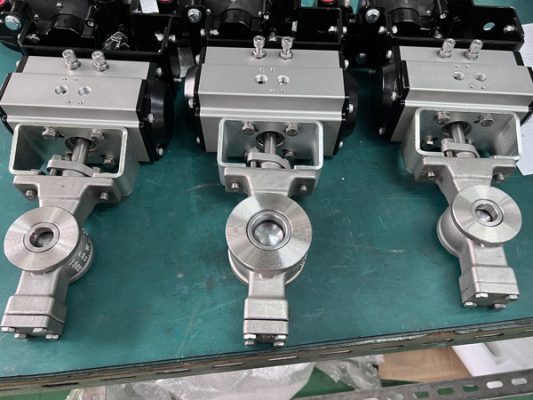Accurate calculation of Control Valve Kv is essential for creating efficient and reliable system designs. Kv, a critical flow capacity metric, ensures valves operate smoothly and meet demanding industrial requirements. This is especially crucial in steam applications, where precise control impacts overall performance. When designing systems with components like a Steam Control Valve or a steam flow control valve, proper Kv sizing directly affects flow efficiency and pressure stability. For equipment such as a steam pressure reducing valve or a steam pressure regulating valve, selecting the right Kv value ensures consistent operation, energy efficiency, and system longevity, making it a vital step for engineers.
Introduction Control Valve Kv
Control Valve Kv is a fundamental parameter used to quantify a valve’s flow capacity, making it a crucial factor in the design and optimization of industrial systems. By determining the volume flow rate at a given pressure drop, Kv calculations help ensure that valves operate efficiently under varying conditions. For instance, in steam and temperature-sensitive systems requiring a temperature regulating valve, accurate Kv sizing allows for precise control and improved energy efficiency. Commonly used valve types, such as the Pneumatic diaphragm control valve or the Pneumatic globe valve, depend on this calculation to maintain stable operation. To meet industry standards, many pressure regulating valve manufacturers prioritize Kv accuracy to deliver optimized performance across diverse applications.

1. Understanding Control Valve Kv
1.1 What is Control Valve Kv?
Control Valve Kv is a key measurement that defines a valve’s flow capacity, calculated as the volume of fluid (in cubic meters per hour) that can pass through it with a one-bar pressure drop. This parameter is vital in industrial systems, as it ensures precise flow control, efficient operation, and system stability. Proper understanding and sizing of Kv help engineers select valves that suit specific process conditions, optimizing performance and reducing energy waste. Whether for steam, gas, or liquid applications, Kv is the foundation of effective system design and reliable valve functionality.
Self-operated regulating valves
Self-operated regulating valves play a critical role in flow management by using the process medium’s energy to regulate pressure, flow, or temperature without external actuation. These valves rely on accurate Control Valve Kv calculations to ensure they meet specific system demands, optimizing performance and maintaining energy efficiency. Ideal for industrial applications requiring simplicity and reliability, self-operated regulating valves excel in maintaining stable operations across varying conditions, making them an essential component of efficient system design.
1.2 Why Control Valve Kv Matters in System Design
Control Valve Kv is a crucial factor in system design, as it determines a valve’s ability to manage flow under specific pressure conditions. Proper Kv sizing ensures that the system operates efficiently, with optimal control over variables such as pressure, temperature, and flow rates. This level of precision minimizes energy loss, enhances reliability, and prolongs the lifespan of system components. Incorporating accurate Kv values into design calculations is essential for industrial systems to achieve consistent performance, adapt to varying process demands, and maintain overall operational stability.
Pressure regulating valve manufacturers
Pressure regulating valve manufacturers are pivotal in delivering valves with precise Control Valve Kv values, tailored to meet diverse industrial system needs. By leveraging advanced engineering and rigorous quality control, these manufacturers ensure their products provide accurate flow management and adaptability to varying pressure conditions. This precision is critical for optimizing system performance, minimizing energy loss, and maintaining long-term reliability. Through innovation and expertise, manufacturers play a central role in empowering engineers to design efficient, stable, and high-performing systems across a wide range of applications.

2. Factors Influencing Control Valve Kv Calculations
2.1 Pressure Drops in the System
Pressure drops in a system significantly influence Control Valve Kv calculations, as they represent the energy loss that occurs when fluid flows through the valve and piping. Accurate measurement of these drops is essential for determining the correct Kv value, ensuring the valve can handle the required flow rate under specific operating conditions. Ignoring or underestimating pressure drops can lead to improper sizing, reduced efficiency, and potential system instability. By factoring in pressure drops during design, engineers can optimize flow control, maintain system reliability, and achieve peak operational performance.
Steam pressure reducing valve
Steam pressure reducing valves are integral to system design, as they regulate and stabilize steam pressure to match specific process requirements. Their performance directly ties to accurate Control Valve Kv calculations, which ensure the valve achieves precise flow control under varying pressure conditions. By maintaining target pressure levels and reducing excess energy loss, these valves enhance operational efficiency and protect downstream components. Proper selection and sizing, supported by accurate Kv assessments, are vital for achieving reliable and consistent performance in steam systems.

2.2 Medium Properties (Steam, Gas, Liquid)
The properties of different mediums—such as steam, gas, and liquid—play a vital role in Control Valve Kv calculations, as they directly impact flow behavior and energy dynamics within a system. Factors like density, viscosity, and compressibility must be carefully analyzed to ensure accurate Kv sizing and effective valve performance. For example, gases and steam present unique challenges due to their compressible nature, requiring more detailed calculations than liquids. Incorporating medium-specific characteristics into the design process is essential for maintaining precision, optimizing flow control, and ensuring the system operates reliably under varying conditions.
Temperature regulating valves
Temperature regulating valves are essential in managing the properties of mediums like steam, gas, and liquid, ensuring optimal system performance. By precisely controlling temperature levels, these valves stabilize viscosity, density, and thermal energy transfer, all of which directly impact flow characteristics and operational efficiency. Their precise functionality prevents system imbalances caused by temperature fluctuations, safeguarding equipment integrity and maintaining consistent, reliable performance in demanding industrial processes.
Steam pressure regulating valve
Steam pressure regulating valves play a crucial role in managing the unique properties of steam, such as its compressibility and thermal energy content. By maintaining consistent pressure levels, these valves ensure stable steam density and temperature, which are essential for accurate flow control and efficient energy transfer. Their precise operation protects downstream equipment from damage caused by pressure surges and guarantees reliable performance in complex steam systems, making them vital for achieving optimal system efficiency and safety.
2.3 Valve Type Considerations
Selecting the right valve type is critical for addressing the unique properties of steam, gas, and liquids within a system. Each valve design, whether globe, ball, or butterfly, offers specific advantages depending on factors like medium density, viscosity, and pressure characteristics. For example, globe valves excel in precision control for compressible gases, while ball valves are optimal for handling high-viscosity liquids with minimal flow resistance. Careful consideration of valve type ensures compatibility with medium properties, ultimately enhancing control accuracy, efficiency, and the longevity of system components.
Pneumatic globe valves
Pneumatic globe valves are highly regarded for their precision and reliability in regulating fluid flow under varying pressures and temperatures. Their design allows for exceptional throttling capabilities, making them ideal for applications requiring fine flow control, such as in steam and gas systems. The use of pneumatic actuators ensures rapid and accurate response to control signals, optimizing system efficiency and performance. These valves are particularly suited for industries where consistency and durability are paramount, even in demanding operating conditions.
electric globe valves
Electric globe valves offer precise flow control with the added advantage of electric actuation, enabling consistent operation without requiring extensive pneumatic infrastructure. These valves are particularly well-suited for systems demanding accurate, automated control over fluid handling, such as in HVAC, water treatment, and chemical processes. Their ability to integrate seamlessly with advanced control systems enhances overall efficiency, reliability, and adaptability in modern industrial applications, even under stringent operating conditions.

3. Step-by-Step Guide to Calculating Control Valve Kv
3.1 Gather System Data
Accurate system data collection is the foundation for calculating Control Valve Kv with precision. Key parameters include flow rate, pressure drop, temperature, and the medium’s density or viscosity. These variables provide essential insights into system dynamics, ensuring the selected control valve meets performance requirements. Meticulously gathered data minimizes the risk of errors, enhancing system efficiency, reliability, and safety in demanding industrial applications.
Use steam systems with a Self-operated pressure regulating valve as an example.
Self-operated pressure regulating valves in steam systems rely heavily on accurate system data to ensure optimal performance. Critical parameters such as inlet and outlet pressure, flow rate, and steam temperature must be precisely measured. This information enables precise valve sizing and setting adjustments, ensuring steady pressure control and preventing inefficiencies or equipment stress. Properly gathered data simplifies system integration and enhances reliability, making it essential for effective pressure regulation in demanding steam applications.
3.2 Calculate Using the Kv Formula
The Kv formula serves as a critical tool in determining the appropriate control valve size by quantifying flow under specific conditions. By using key variables such as flow rate, pressure drop, and medium properties, the formula calculates the valve’s flow coefficient, which represents its capacity to pass fluid. This calculation ensures that the selected valve can handle the system’s requirements efficiently and reliably, optimizing performance while minimizing energy losses.
Provide a worked example using a Pneumatic globe valve in a steam pipeline design.
To size a pneumatic globe valve for a steam pipeline, apply the Kv formula using key parameters such as a flow rate of 5 m3/h and a pressure drop of 1.2 bar across the valve. With steam properties like density considered, the Kv calculation determines the valve’s required flow coefficient to maintain optimal performance. This practical approach ensures precise valve selection, supporting efficient regulation and reliability in high-temperature steam systems.
3.3 Verification and Iteration
Verification and iteration are essential steps in calculating Control Valve Kv to ensure the valve performs as intended within the system. By reviewing initial calculations and comparing them against real-world conditions, discrepancies can be identified and corrected. Iterative adjustments, such as refining variable inputs or reassessing assumptions, help confirm that the selected valve fulfills flow, pressure, and safety requirements, enhancing overall efficiency and reliability in demanding industrial processes.
Reference how choosing the wrong Kv value could affect a steam pressure reducing valve in a high-pressure application.
Selecting the wrong Kv value for a steam pressure reducing valve in a high-pressure application can lead to critical issues. An oversized valve may cause pressure instability and poor flow control, while an undersized valve can restrict flow, leading to inefficiency and potential overheating. Such mismatches not only compromise system performance but also risk equipment strain or failure. Accurate Kv selection ensures stable pressure regulation, maintaining safety and reliability in demanding steam environments.
4. Practical Applications of Control Valve Kv in System Design
4.1 Steam and Temperature Control Systems
Explore how Kv calculations influence the performance of temperature regulating valves in steam control scenarios.
Accurate Kv calculations are vital for the performance of temperature regulating valves in steam control scenarios, ensuring precise and consistent temperature management. By aligning the valve’s flow capacity with the system’s thermal demands, these calculations prevent issues such as overheating or underheating, which can disrupt processes or reduce efficiency. Properly determined Kv values enhance system reliability and energy efficiency, supporting optimal performance in demanding steam applications.
Use a Self-operated pressure regulating valve setup in a real-world example.
Self-operated pressure regulating valves are commonly used in applications like natural gas pipelines, where maintaining consistent downstream pressure is critical. For instance, in a setup managing a supply pressure of 10 bar reduced to 6 bar, accurate Kv calculations ensure the valve is properly sized to handle the flow rate and varying conditions. This precision prevents pressure fluctuations and ensures reliable, autonomous operation without external energy sources, optimizing efficiency and maintaining system stability.

4.2 Pressure Regulation Systems
Explain the role of accurate Kv computation in regulating pressure levels across systems using steam pressure regulating valves.
Accurate Kv computation is essential in regulating pressure levels across systems using steam pressure regulating valves. By matching the valve’s flow capacity to the required operating conditions, precise calculations ensure stable pressure control, preventing inefficiencies such as energy loss or instability. This accuracy safeguards system performance while minimizing risks associated with over-pressurization or insufficient steam supply, supporting both operational safety and efficiency in steam-driven applications.
Reinforce best practices endorsed by pressure regulating valve manufacturers.
Pressure regulating valve manufacturers emphasize best practices such as accurate Kv calculations, consistent maintenance, and strict adherence to installation guidelines. These measures ensure the valve operates efficiently, maintaining stable pressure levels and minimizing risks of system failures. Following these recommendations enhances reliability, extends valve lifespan, and upholds safety standards, making them critical for seamless operation in pressure regulation systems.
FAQ Control Valve Kv
1. What role does Control Valve Kv play in sizing a pneumatic control valve?
Control Valve Kv is a critical factor in determining the correct sizing of a pneumatic control valve. It measures the flow rate through the valve at a specific pressure differential, ensuring the valve is neither undersized nor oversized. Proper Kv computation enables precise flow control, critical for optimal performance in systems utilizing pneumatic control valves for accurate throttling and efficient operation.
2. Can an electric control valve provide accurate flow regulation with incorrect Kv calculations?
No, an electric control valve cannot achieve accurate flow regulation if the Kv calculations are incorrect. Kv directly influences how the valve responds to system demands, and any miscalculation may lead to poor pressure control, inefficiency, or mechanical stress. Using tools like manufacturer-specific calculators and precise system parameters is essential to ensure an electric control valve functions as intended.
3. How does Kv calculation differ for an electric globe valve versus a pneumatic control valve?
Kv calculation principles remain consistent across valve types, but the complexity of system dynamics may vary. For an electric globe valve, the focus often includes managing steady-state conditions, while a pneumatic control valve must account for real-time pressure variances. Understanding these unique applications ensures Kv is calculated to match each valve’s operational characteristics, enhancing stability and performance in diverse system designs.

Conclusion Control Valve Kv
Accurate Control Valve Kv calculations are essential for achieving efficient and reliable system designs across various industrial applications. Properly determining Kv ensures valves are appropriately sized and capable of maintaining precise flow rates under specific operating conditions. Whether working with a pneumatic control valve, self-operated pressure regulating valve, or self-operated control valve, precision in Kv calculations minimizes the risk of inefficiencies, pressure instability, or potential system failure. For self-operated regulating valves, which rely on their internal mechanisms rather than external power sources, accurate Kv values are especially critical to ensure autonomous and consistent performance. By adhering to manufacturer guidelines, leveraging advanced tools, and thoroughly analyzing system dynamics, engineers can optimize valve functionality and extend system lifespan. This meticulous approach not only supports operational efficiency but also underscores the value of robust engineering practices in modern pressure regulation systems.

